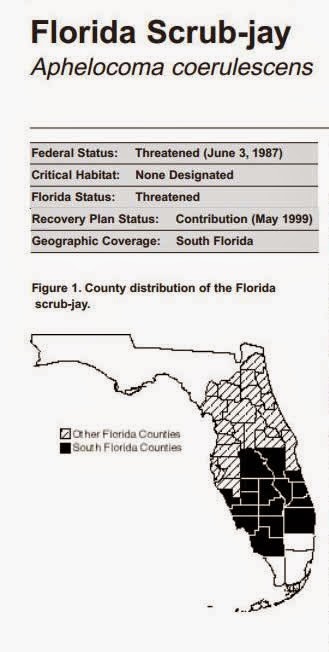This semester, the Wilkes Honors College located on the Jupiter FAU campus, is offering BSC 4930: Field Biology and lab. This class gives students an opportunity to meet working biologists out in the environments they research. The class also prepares students to investigate and write their own research proposals needed for their senior thesis projects. The class is taught by Dr. James Wetterer.
Here are some photos of a class trip to the Abacoa Greenway with guest biologist and Honors college professor Dr. Jon Moore. He was teaching the class the proper protocols for research, behaviors, morphology, etc. of the gopher tortoise (Gopherus polyphemus). You can learn all about his research by going to his faculty page here.
Dr. Wetterer's faculty page can be found here.
Thursday, January 29, 2015
Wednesday, January 21, 2015
Floating Research Science Barge
The New Times-Miami recently posted a story on a local innovative floating science barge that will bring many opportunities to Biscayne Bay. READ THE STORY HERE.
Photo by Ryan Somma | Flickr CC
Photo by Ryan Somma | Flickr CC
Tuesday, January 20, 2015
The Abacoa Greenway & the Gopher Tortoise
"Gopher Tortoise Crossing - Road Sign" by Jean-Lou Justine - Own work. Licensed under CC BY-SA 4.0 via Wikimedia Commons - http://commons.wikimedia.org/wiki/File:Gopher_Tortoise_Crossing_-_Road_Sign.JPG#mediaviewer/File:Gopher_Tortoise_Crossing_-_Road_Sign.JPG
Learn more about the gopher tortoises (Gopherus polyphemus) that make their home right next door to the FAU Jupiter campus. You can read about it on Dr. Jon Moore's Research page here.
Wednesday, January 7, 2015
Florida Scrub Jay
The Florida Scrub Jay is a relic species (one that inhabits a much smaller geographical area than it did in the past) often due to habitat loss and environmental change) of fire dominated oak scrub habitat that has well drained, sandy soil.
The species was listed as threatened in 1987 by the federal government due to habitat loss, degradation and fragmentation. The scrub jay has seen population declines by an estimated 25-50% over the last ten years. The most recent overall population estimate taken in 1993 is 11,000 birds.
Figure one to the left shows distribution of the scrub jay throughout Florida. The species has been extirpated from Broward, Dade, Duval, Gilchrist, Pinellas and St. John Counties.
The Florida Scrub Jays social structure exhibits cooperative breeding; which is distinctive to Florida populations. This trait has not been observed in other Western North American populations. The breeder males are dominant in the cooperative hierarchy; followed by helper males, breeder females, and helper females. The helpers participate in sentinel duties, territorial defense and feeding nestlings and fledglings.
To find out more information on this endangered species please visit the Fish and Wildlife report found here.
(Reference: Fish and Wildlife, Multi-species Recovery Plan)
The species was listed as threatened in 1987 by the federal government due to habitat loss, degradation and fragmentation. The scrub jay has seen population declines by an estimated 25-50% over the last ten years. The most recent overall population estimate taken in 1993 is 11,000 birds.
Figure one to the left shows distribution of the scrub jay throughout Florida. The species has been extirpated from Broward, Dade, Duval, Gilchrist, Pinellas and St. John Counties.
The Florida Scrub Jays social structure exhibits cooperative breeding; which is distinctive to Florida populations. This trait has not been observed in other Western North American populations. The breeder males are dominant in the cooperative hierarchy; followed by helper males, breeder females, and helper females. The helpers participate in sentinel duties, territorial defense and feeding nestlings and fledglings.
To find out more information on this endangered species please visit the Fish and Wildlife report found here.
(Reference: Fish and Wildlife, Multi-species Recovery Plan)
Subscribe to:
Posts (Atom)







